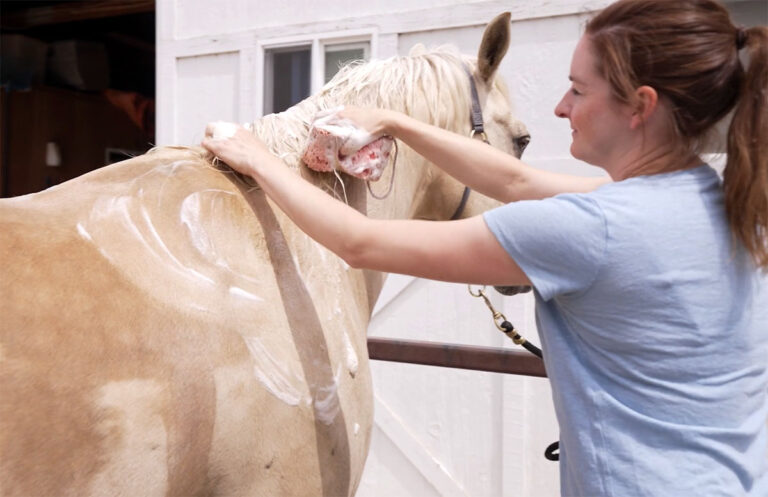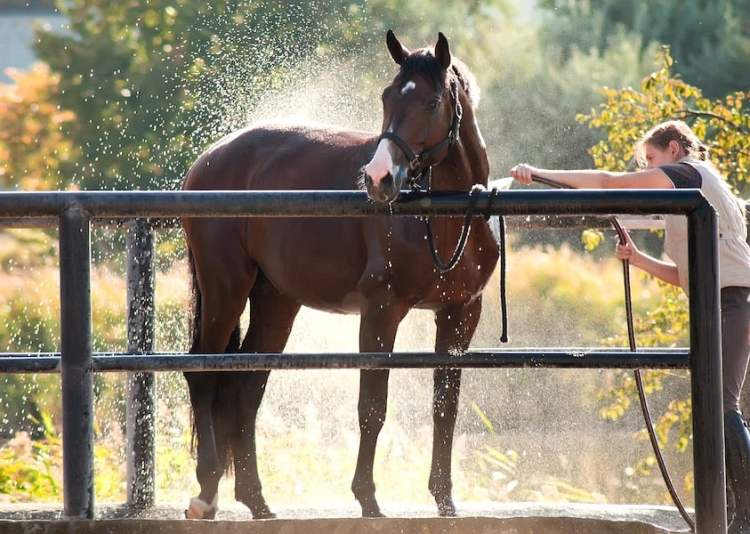In the world of equine splendor, few questions spark as much curiosity and awe as what are the 3 largest horse breeds? These majestic creatures captivate our imagination with their sheer size and grandeur. In this article, we delve into the world of these giant horses, uncovering the charm and history behind them. Horse enthusiasts, as well as those new to the world of horses, will find something fascinating in the following exploration.

The World of Large Horse Breeds
Often called ‘gentle giants,’ the largest horse breeds in the world stand out not only for their impressive size but also for their calm demeanor and strength.
1. Shire Horse: The Tallest of Them All
Shire Horses are renowned for their incredible height and strength. Originating from England, this breed holds the record for the tallest horse ever documented. They are often used in parades and as ceremonial horses, showcasing strength and gentleness, a combination that makes them truly remarkable.
History of Shire Horses
The origins of the Shire Horse trace back to the medieval era when they were used as war horses. Over time, they evolved into draft horses, helping in agriculture and transportation. With their rich history, they remain an integral part of British culture.
Physical Characteristics
Standing at an average of 16 to 18 hands tall, Shire Horses have muscular and well-proportioned bodies. Their coats are usually bay, black, or gray, adorned with lush feathering on their legs.
2. Clydesdale Horses: Iconic and Majestic
The Clydesdale breed, originating from Scotland, is easily recognizable due to its distinctive appearance and massive size. These horses gained international fame as the face of a popular beer company, appearing in numerous commercials that highlight their grandeur.
Clydesdale in History
Initially bred for agriculture, Clydesdales became famous due to their work in pulling carriages and as show horses. Their legacy continues as they are still used in parades and events around the world.
Breed Characteristics
Typically, Clydesdales stand between 16 to 18 hands and have a beautiful bay coat with white markings. Their long, flowing feathers on their legs add to their majestic appearance.
3. Belgian Horse: The Powerhouse Breed
The Belgian Horse, also known as the Belgian Draft, is renowned for its power and gentle nature. These horses are often used in farming and pulling competitions, showcasing their strength and resilience.
Historical Background
Belgian Horses have a firm place in agricultural history, especially in Europe. Known for their strength, they were invaluable in farming and transportation before the advent of machinery.
Physical Attributes
Belgian Horses typically stand between 16 to 17 hands, boasting a muscular build. They are mostly chestnut in color with a flaxen mane and tail, making them a sight to behold.
Reasons for Admiring Large Horse Breeds
The fascination with large horse breeds lies in their ability to combine power, elegance, and a gentle nature seamlessly. These horses are not only stunning to look at, but they also have a long history of service and companionship to humankind.
Modern-Day Roles
Today, these breeds are often seen in shows, parades, and ceremonial roles. Their grandeur and presence never fail to captivate audiences.
Companion Remarkability
Beyond their physical abilities, what makes these horses truly exceptional is their temperament. Known for being gentle and friendly, they make great companions and even therapy animals.
Nurturing and Care for Large Horse Breeds
Owning a large horse breed comes with its unique set of responsibilities. From ensuring proper nutrition to accommodating their large size, owners have to be well-prepared.
Feeding and Nutrition
Due to their size, these horses require more substantial feed and resources. A balanced diet rich in nutrients is crucial for their health and longevity.
Space and Exercise Requirements
Large horses need ample space to move and exercise. Regular physical activity is important for maintaining their muscle tone and overall well-being.
Challenges of Breeding Large Horses
Breeding large horses is a challenging endeavor due to their specific needs and the resources required to maintain them. Understanding these challenges is important for prospective breeders.
Health Concerns
Large breeds often face health concerns related to their size, including joint issues and metabolic challenges. Regular veterinary check-ups are essential to ensure their health.
Breeding Considerations
Ensuring the continuation of these breeds involves careful selection of breeding pairs to maintain strong genetics without introducing health risks.
The Future of Large Horse Breeds
As we look towards the future, the role of these magnificent animals continues to evolve. Proper maintenance of their well-being is crucial to keeping these breeds thriving for future generations.
Conservation Efforts
Efforts to conserve and protect these breeds are ongoing. Ensuring their habitat and breed standards continue to meet traditional criteria is vital.
Continuing Legacy
The legacy of these majestic horses is one of strength, beauty, and tranquility. As they continue to participate in various roles in society, their value only increases.
Conclusion
In answering the question what are the 3 largest horse breeds? we’ve explored the Shire, Clydesdale, and Belgian Horses, each with their unique beauty and history. These breeds represent a fascinating piece of human and animal history, with much to offer in terms of companionship, service, and inspiration.

FAQ
1. Which is the tallest horse breed?
The Shire Horse holds the record as the tallest horse breed, known to reach heights of up to 19 hands.
2. Are large horse breeds suitable for beginners?
Large horse breeds, although gentle, require experienced handling due to their size. It’s best for beginners to have guidance when interacting with them.
3. Where can I see these horses in action?
You can see these horses in parades, agricultural fairs, and events worldwide. The events often feature demonstrations of their abilities and showmanship.








